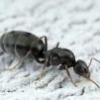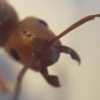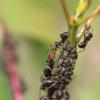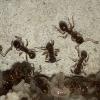1. Location (on a map) of collection: Eastern part of Wisconsin
2. Date of collection: 7-21-19
3. Habitat of collection: Sidewalk outside my house
4. Length (from head to gaster): 6 mm
5. Color, hue, pattern and texture: Black with tiny bits of rust color or red and brown
6. Distinguishing characteristics: N/A
7. Distinguishing behavior: Likes to climb up walls and sit upside down on the wet cotton ball
8. Nest description: N/A
9. Nuptial flight time and date: Not sure
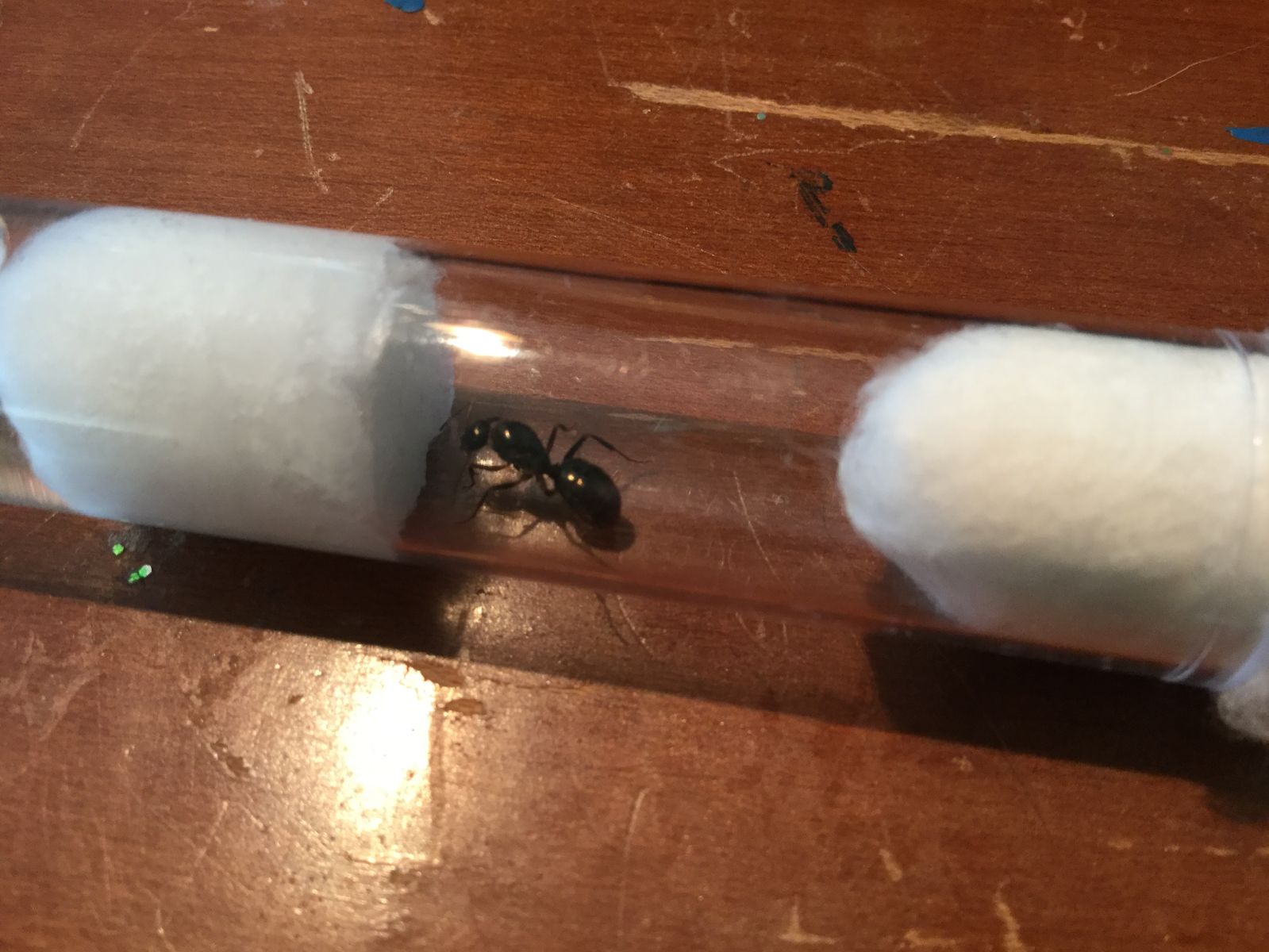
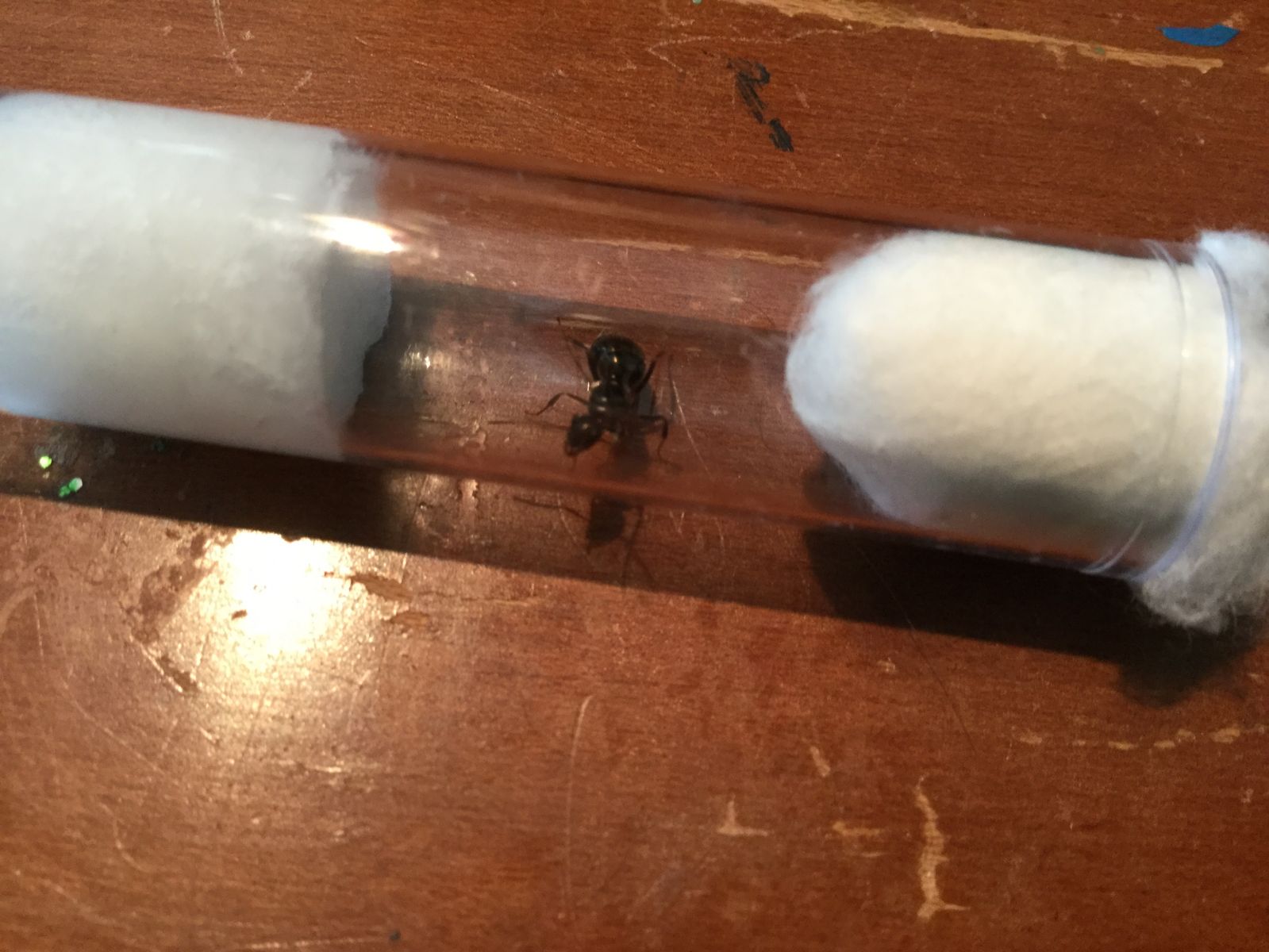
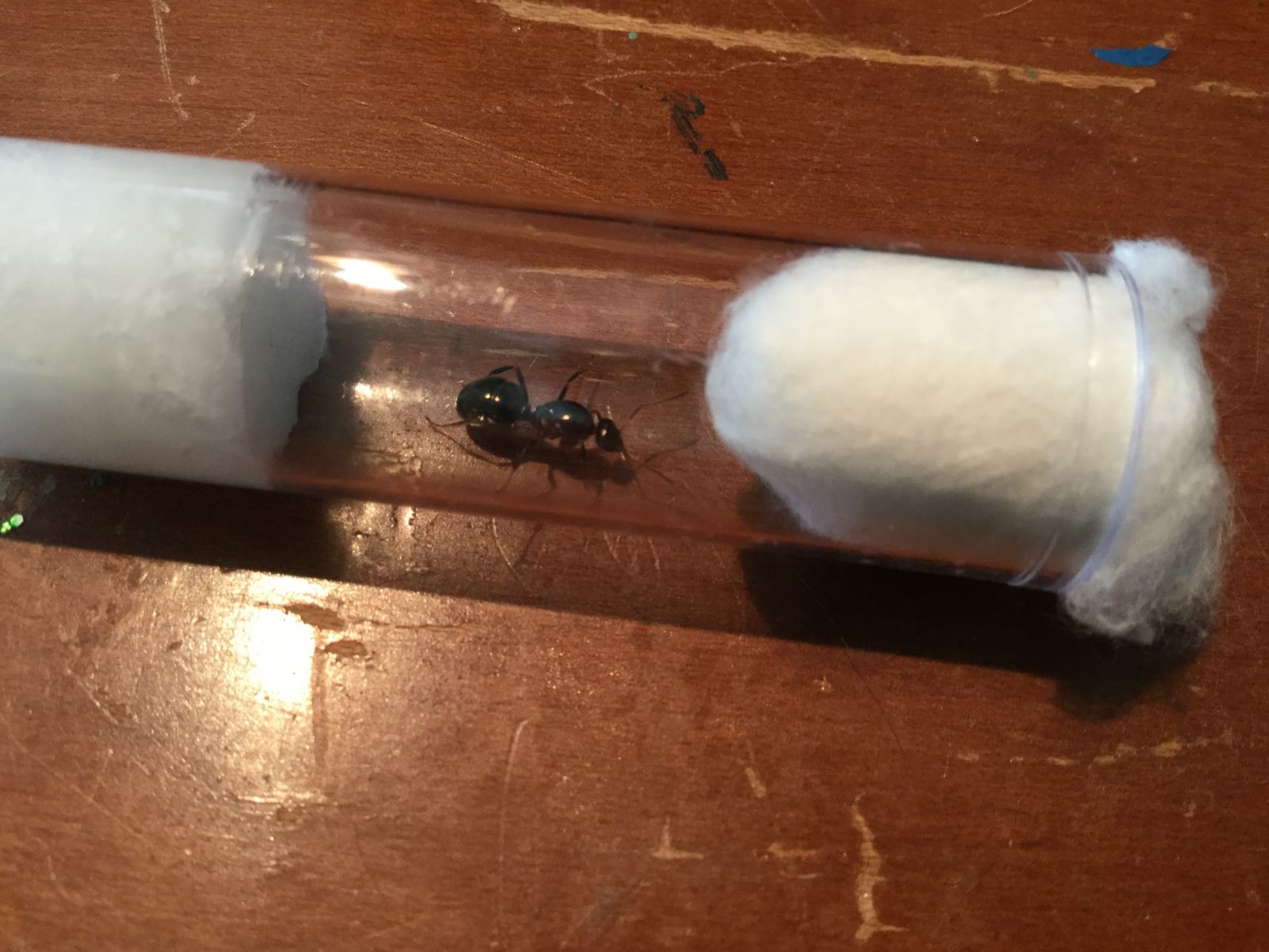
Edited by Pumpkin_Loves_Ants, July 21 2019 - 12:49 PM.



